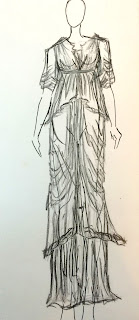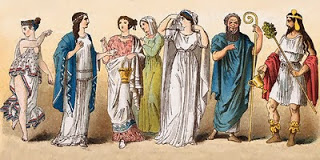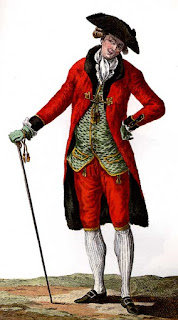Baroque and Rococo were one of the most glistening eras of the fashion history which might never return. The gilded elaborate clothing and the heavy Renaissance influence makes the eras stand out completely. Here is a look at these bygone eras. These eras existed from 1650-1800s.
BAROQUE ERA (FASHION)
The classical Baroque era shined in all aspects of art, culture, architecture, fashion under the reign of Louis XIV. This was an extremely luxurious era with rich fabrics, colors textures and curve accentuating silhouettes. The clothing had a lot of surface ornamentation such as use of lace, sequins, pearls, gold embroidery. There seemed to be growing a new bourgeois class who followed nobility fashion fervently. Fashion Designers were on the rise about this time and bespoke dressmaking was indulged in by all. Women wore tighter corsets and flowing gowns with high cinched waistlines. The plunging neckline called the decolletage became overtly popular among women and was sometimes covered with a scarf tied at the bosom for modesty. This was also the period in which women wore two skirts, one the under skirt for giving the structure over the bustle and on top of that was the over skirt which usually was open-front and had a train behind. Lace, Brocades and Ribbons were very common element of decoration. Makeup was used by all of the women and not only courtesans like before. The most common was rouge on the cheeks and lips. Women even started wearing heels and minimal jewelry.



Cavalier style for men was very common during this era with tight patterned breeches, knee high boots with turned down lace trimmings, wide brimmed hats with feathers were common among the bearded romantics.
Square-toed high heeled boots were very common along with riding cots with puffed sleeves. Men continued wearing wigs too.
ROCOCO ERA (FASHION)


Fashion became excessively elaborate and shifted from Versailles to Paris. The raging fashion had an impact not only on royalty and aristocrats but also on middle and lower class. The most important figures of fashion during this era were Madame Pompadour and Marie Antoinette. Madame Pompadour was the promiscuous mistress of Louis XV. She established Rococo fashion adorning a lot of pastels and floral patterned flowing silhouettes with plunging necklines and feminine forms. This light and happy style came to be known as Rococo. Fashion magazines were very popular among the aristocrats and later among the lower class. Rococo spread from France to other European countries as well. For instance the Robe e la Francaise, Robe e la Anglais and Robe e la Polonaise were staple fashion across countries. Later the extravagant Marie Antoinette along with her dressmaker Rose Bertin became fashion icons eventually leading to the French Revolution.
Women wore sashes tied at neck like Marie Antoinette with everyday gowns. Wide hoops and panniers were worn extensively with formal wear. This look gave the illusion of full lower skirt and very tight, cinched upper bodice with a structured corsets. Heels became slimmer and higher with dainty decorations. Women wore flowers, feathers, jewels and other accessories with their extravagant and towering powdered wigs.
Men's fashion didn't go under great changes from the Baroque period. Except coats became more structured and not as flowing and had further elaborate designs on them. The breeches worn shortened in length worn till the knees with high white stockings showing their slender legs. French aristocrats and royal men who dress in an extensive and dainty manner came to be known as the Macaronis and were often mocked by the lower societies. The middle and lower class during the French Revolution showed a lot of patriotism in their fashion wearing a lot of reds, blues and whites from their national flag. As this era highlighted the beginning of the French Revolutions, the fashion held a lot of importance in future decades.
Reference : https://historyofeuropeanfashion.wordpress.com/category/baroquerococo-1650-1800/
Photo Credits : Pinterest











































